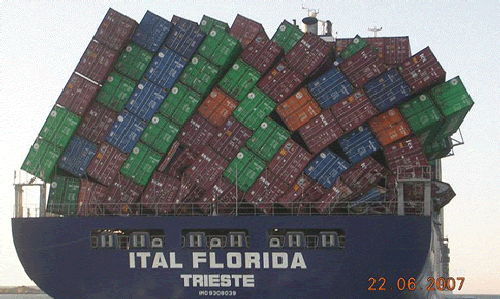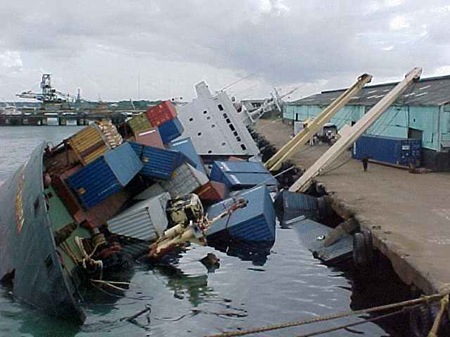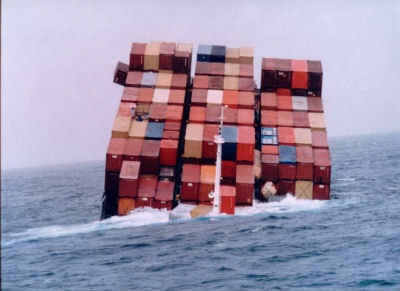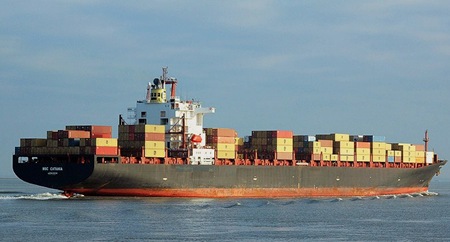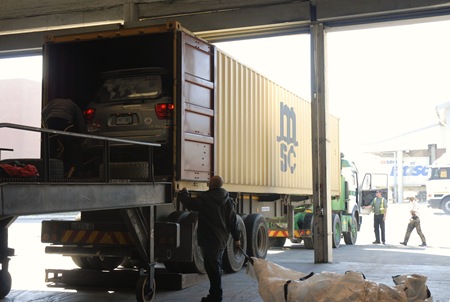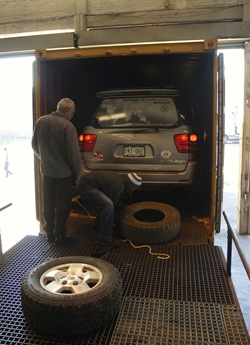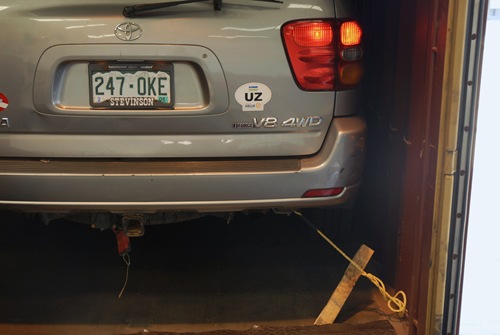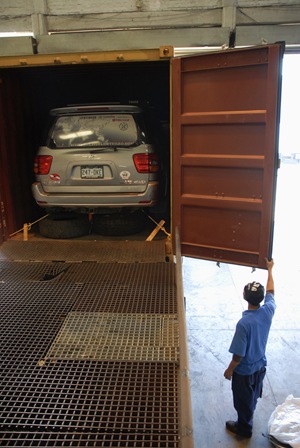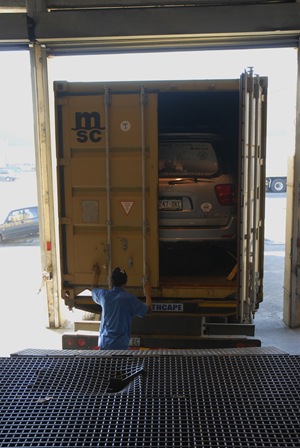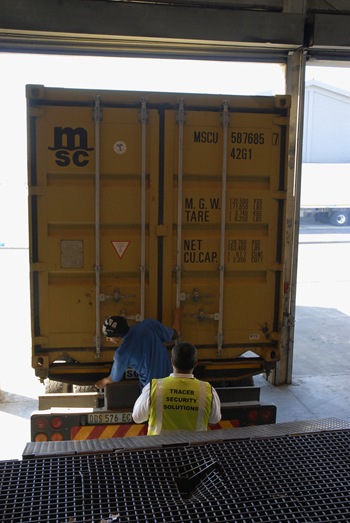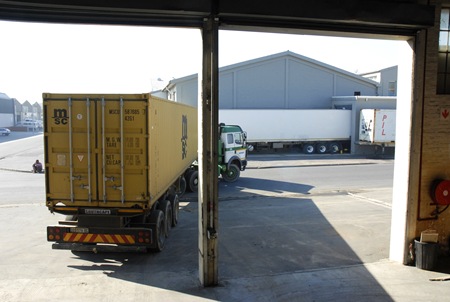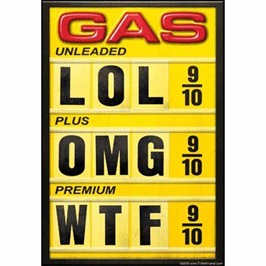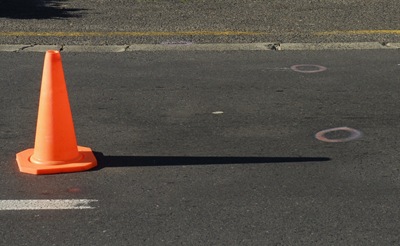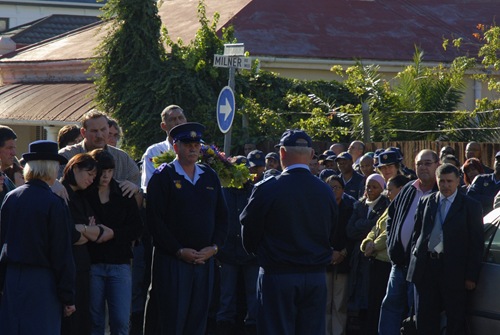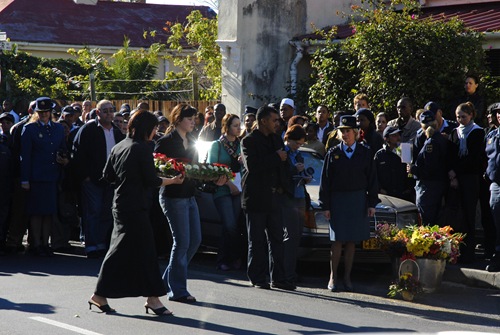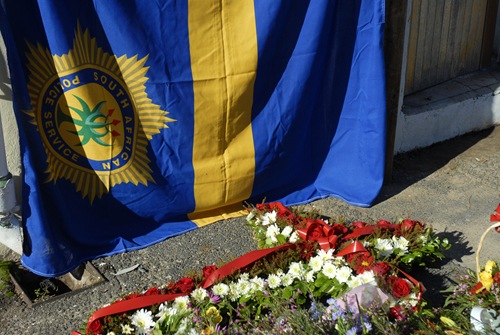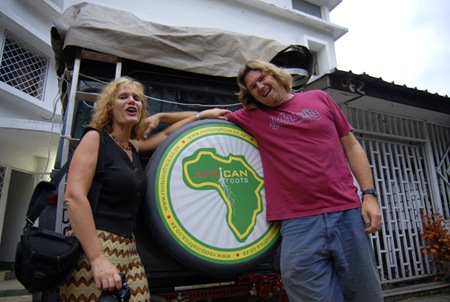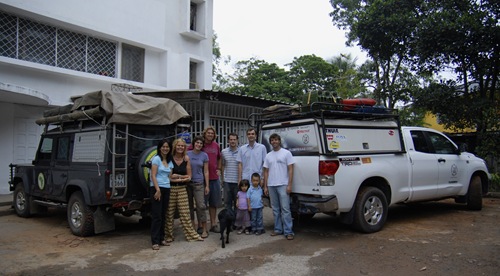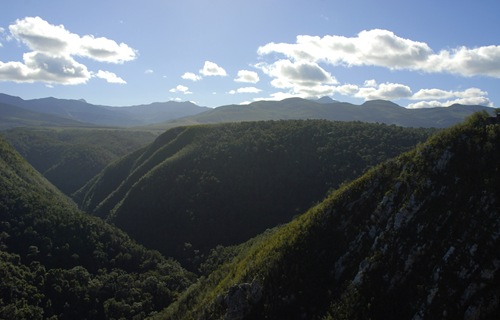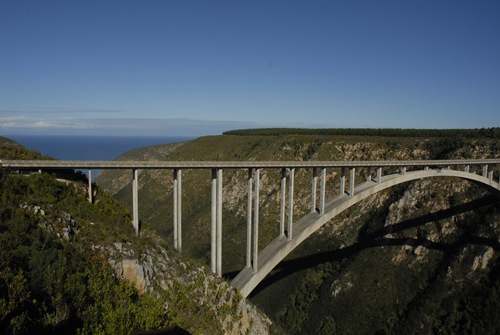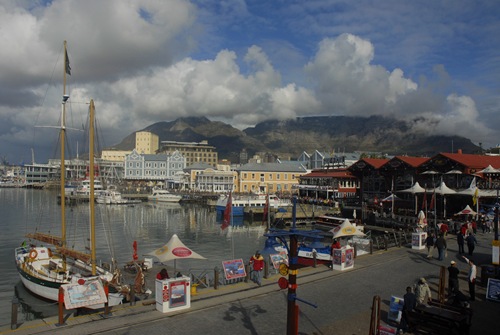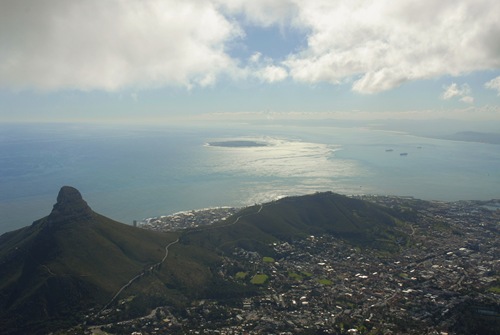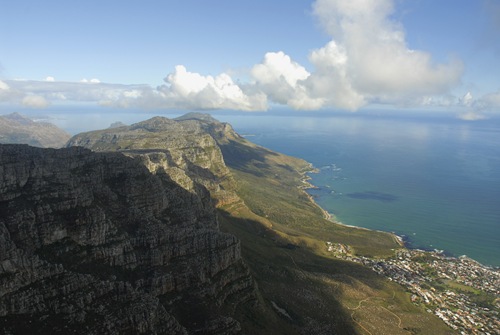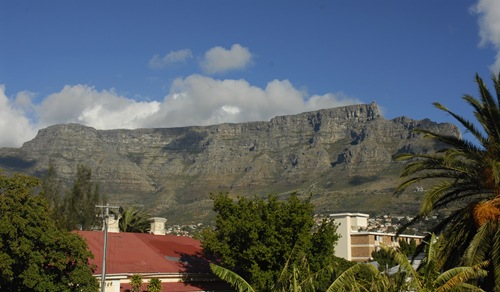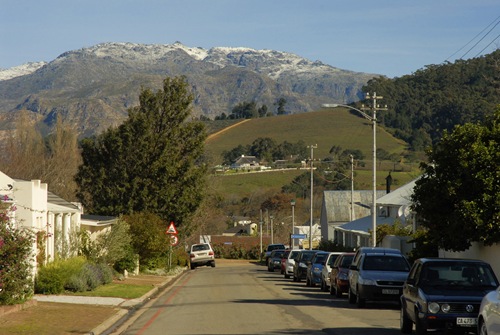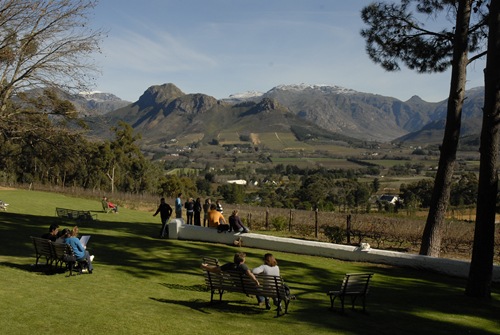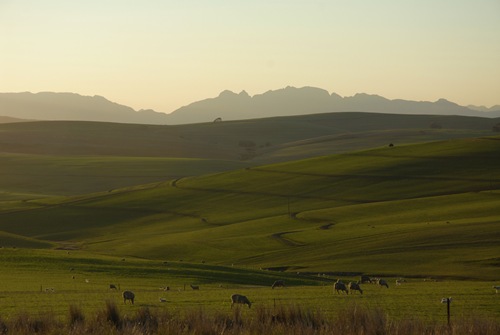In 1893, the crazy Norwegians living in the north of their country were mostly cut off from the outside world. With giant fjords and mountains blocking easy paths to and from the northern coast, inhabitants could hardly receive letters, let alone even consider the idea of leaving. What is now called the Hurtigruten group changed all of that. After the first express voyage spawned regular service after that, citizens in the north could receive letters in 3 days instead of up to 5 months in the winter. The truly remarkable aspect of this achievement was that the initial sailings of these express boats were done with only two official coastal charts and a small smattering of lighthouses in a place that is dark most of the time in winter.
About 4 years ago, this same route was mine during the summer. I spent about a week as a bum on the Hurtigruten reading “Who Needs a Road” while sitting in the sun at 3am on the top deck of the boat. As a poor young traveler, I boarded the boat with no room booked, slept on the couch in the lobby and to my surprise never was forced to purchase a room. With so much time to sit and read as I passed through fjord after fjord, I managed to finish the book in a couple of days and was convinced that I needed to drive around the world.
while sitting in the sun at 3am on the top deck of the boat. As a poor young traveler, I boarded the boat with no room booked, slept on the couch in the lobby and to my surprise never was forced to purchase a room. With so much time to sit and read as I passed through fjord after fjord, I managed to finish the book in a couple of days and was convinced that I needed to drive around the world.
Four years later, I am driving around the world. However, this time, instead of being on the Hurtigruten in the midnight sun in the summer, my journey journey was in the winter. This time, it was even more of an adventure. We had always planned to go up to North Cape, and were not sure the best route to head back south. After sending an email to the Hurtigruten to see if they would like to have us film and write about our journey with them, they obliged giving us a free ride and transportation of the trucks. Not only was this a cool way to travel south, it was a lifesaver on the cost of gas with one gallon reaching over $8. We looked at our options for the different ships that were heading south finding that only certain boats were able to carry the trucks. We talked to the marketing guy, Stan, at Hurtigruten and were informed that the updated schedule had the Richard With, their flagship boat, available to take us south the day after our scheduled convoy to the North Cape. Perfect!
This was in direct conflict to the information that I had found online, but he was the boss. The important note about the sailing of this ship was that it would get us into Bergen the day before the next ferry from Bergen to Newcastle in the UK. Since that ship only sails every three days and my parents were to arrive in London the same day of our arrival in the UK, we had no choice but to make it on this ship. It was falling together like clockwork. Go to North Cape, take a night to get organized, board the Richard With, hang out on the ship for a few days, get into Bergen in time for an interview with the local newspaper and board the next ship…no problem. After we reached North Cape we were all elated. “Let’s go open that champagne!” “Halfway around the world North to South and now we get to ride on a ship!!”
When we got back to our hotel, the manager allowed me to use the phone. I needed to call the reservations desk on the Richard With to confirm some rooms for us the next day. Mark and Bouey went down to the kitchen to open the champagne. I called the reservations lady and said, “Hello this is Steven Shoppman with TWBR, I think Stan already contacted you about booking some rooms on the Richard With and I am calling to confirm them.”
“We have already sailed. Didn’t Stan contact you?”
“Oh there most be some kind of mistake. This is the Richard With that sails tomorrow from Honningsvad, right?”
“Yes this is the Richard With, but we sailed this afternoon about 3 hours ago.”
“This must be some kind of mistake, we just talked to Stan and booked this.”
“Stan made a mistake and had the wrong schedule.”
My heart dropped. Things were not going so smooth anymore, and the popping of that champagne bottle seemed to be a little premature. I called Stan and he informed me of his mistake with two options to correct it. Since the trucks would not fit on the ship the next day, we would have to wait two days for the next ship, which would not arrive in Bergen in time to catch our next ferry. Drats! I asked Stan if he thought it would be possible for us to leave right away to catch back up with the Richard With and board it in Tromso, a small city about 8 hours away. He told me it was a longshot, so I said, “Ok, we are packing our bags now, please inform the Richard With that we will be boarding in Tromso.” The three of us hastily packed the trucks in the gale force winds sweeping through the parking lot, gassed up and started the race against the clock to Tromso. Three tunnels, four bridges and two hours later we were back in the plains of northern Norway on our way to the junction to head South to Tromso, still three tunnels, four bridges, and 5 hours away. As we approached the junction we saw a line of cars and a full restaurant of people. Something did not seem right.
When driving in the far north, all the roads are covered in a thick sheet of ice. At first it is a little disconcerting driving at high speeds on the ice, but you get used to the grippiness of the gravel that is embedded in the ice and it actually seems to perform even better than dry pavement. Just before we reached this junction at Skaidi, we were driving in extreme winds with snow falling horizontally, blowing so hard it seemed imminent that the trucks would be blown off the road. A dust of snow blew across the road giving it a look as though the road was made of with white fluff. Once we arrived and saw the lineup, it could mean only one thing. The road south was closed due to the same winds we had experienced already. To do our diligence we asked the plow drivers if we could take our chances on the road as we were tough adventurers and needed to get to Tromso ASAP. A few chuckles later, we were denied.
After calling the road conditions hotline, talking to more locals and getting out the maps, it was clear that we would never make it to Tromso in time. I called Stan and worked out that if we went to Hammerfest, Steve Bouey could get on the ship the next day in order to meet the reporters in Bergen. Markand I would then have to wait for the Trollfjord the day after to take us and the trucks as far down the coast as we could go before disembarking with enough time to carry on the race to catch the Newcastle ferry.
Steve Bouey borded his ship as planned, to his dismay, it was the oldest and smallest of the fleet. At that point we had no choice though. Someone had to get to the reporters in time. The next day Mark and I drove the cars onto the ship and to our surprise boarded the nicest ship in the fleet. Bouey really got the short end of the stick. Not only were we on the nicest ship in the fleet, we had first class dining and one suite for each one of us. Bouey REALLY got the short end. We then checked out the rest of the ship to find a workout room, hot tubs on the roof, and countless other amenities for our enjoyment. Four days went by and we were experiencing hands down the most luxurious part of the expedition so far.
With the Northern Lights in the sky above us, we floated south enjoying a little quiet time down the coast. Mark and I had a chance to meet the captain, get a behind the scenes tour of the ship, and have ample time to research the best place to leave the ship and complete the Norway tour. Alesund was our decision, against the advice of the crew on the ship. They told us to get off sooner, but we did not want to get stuck again in a storm so we chose the closest port still giving us enough time for the drive. The Newcastle ferry was scheduled to leave Bergen at 11:15 am and we would dock in Alesund at midnight, giving us about 10 hours to take two short ferries and cover 450kms in the middle of the night over two different mountain passes on ice covered roads. No problem. The concierge did us the courtesy of getting us the ferry schedules for the short crossings on the way to Bergen. The first was only 10 minutes from the dock and left at 12:45 am. We raced there and were on our way. First ferry down, on to the next mountain pass.
The roads at first were mostly dry and it seemed we would have no problems. Then came the first mountain pass, and of course there was a storm so thick that 4-5 inches of snow had freshly fallen on the road before a plow could get there. It was now about 2 am and we were getting a little tired. Since all of the gas stations we passed were closed we could not get coffee or water so we had no choice other than to eat the single serving Nescafe packets we took from the hotel. We searched the back of the truck and the only liquid we could find was a jar of cherries, so down the hatch went the coffee granules followed by a shot each of cherry syrup to wash it down.
The trucks were still good on gas so we raced on. Another couple of hours went by and the gauges were nearing empty. At 4 am in small towns in Norway the gas stations are not open, but we had one hope. With a local credit card we could use the strange old pay at the pump system and be on our way. We started to flag cars down driving by the gas station to see if they would take our cash and put the gas on their card. Most would speed by or were unwilling to help. Finally a trucker sleeping in the parking lot woke up and was willing to try to help us, but his card did not work at this gas station. It was such a strange thing that a technologically advanced country like Norway would not have a way to get gas at night and not have the credit card systems linked up. Was a credit card problem really going to be what stopped us? At 6:30 am we had no choice but to roll the dice and hope that we made it to the next bigger town without running out of gas. “Okay we will coast in nuetral and the trucker told me that most of the way is downhill,” said Mark.
Fifteen minutes later we were in the gas station, and now were able to buy real coffee to try to rinse some of the granules out of our mouth from the last two rounds of Nescafe. We filled up and carried on to the next short ferry leaving at 7:50 that runs only once an hour and watched it sail at 7:53. It was math time. With a little over 100kms to go and a 20 minute ferry ride that will not start for one hour with an average speed of 60kms per hour including another mountain pass that will slow progress by at least 20%, is it possible for TWBR to make it to the hotel for the interview and still make it to the ferry terminal in time to board the ship to Newcastle at 11:15? No problem. This time we did not believe it as much as before.
On the ferry, winds were whipping across the deck so fast that I was not sure we would even be able to dock on the other side. We made it across, raced out of the ferry terminal and pushed on through the 8 tunnels, one mountain pass, thunderstorm, gale force winds, and some of the most beautiful scenery at sunrise we had seen since the beginning of the expedition. This time however, the sheet of ice on the road did not have that nice grippy gravel all over it and we were sliding all over the place. Ten o’clock passed and we were nearing Bergen where we encountered city traffic. “Come on, come on!!” I said to myself. We were almost there. Traffic is not going to be the thing that stops us from getting on this boat. 10:30 am passed, we were in the city, but could not find the hotel that Bouey and the reporters were at with our limited maps of the city. 10:45 passed, we stopped by a supermarket for directions. Mark came running back outside and we raced to the hotel, parked illegally and grabbed Bouey, the reporter and the photographer shoved everyone in the trucks and raced through traffic while still getting interviewed on the way. The photographer was snapping off shots of us breaking countless traffic rules racing to the docks. We pulled into the parking lot and ran up to the ticket counter, with photograhper and reporter by our side snapping shots the whole way. “My name is Steven Shoppman and this is our confirmation number for the ship that is supposed to leave…right now!!!” I said to the lady on the other side of the counter with bloodshot eyes and no sleep for the last two days.
“We have been waiting for you, hurry up and go through customs and get on the boat!” she replied.
I was nearly in tears from the exhaustion and excitement of knowing that someone somewhere was looking out for us on this one. I have no idea how we pulled it all off. We somehow raced through the mountains and fjords while facing nearly every element you can imagine over the course of ten hours, with no crashes. We officially boarded the boat at 11:16 am and it sailed as we were parking the cars and high fiving the attendants for making it just in time. On the two day ferry to England we made friends with some locals from Bergen and told them our story. They went home the next day to see our story on the cover of the Bergen newspaper.

Stupid bearded adventurers + Mom’s who are happy TWBR made it to London in one piece and on time = Everybody happy.

Bouey talks to the ferry guys about the expedition.
Click here to see the Bergen Article
Click here for the Flickr Gallery
Click here for the TWBR gallery
























INSERT_MAP
![]()
![]()
![]()
![]()
![]()
![]()
![]()
![]()
![]()
![]()
![]()
![]()
![]()
![]()
![]()
![]()
![]()
![]()
![]()
![]()
![]()
![]()
![]()
![]()
![]()
![]()
![]()
![]()
![]()
![]()
![]()
![]()
![]()
![]()
![]()
![]()
![]()
![]()
![]()
![]()
![]()
![]()
![]()
![]()
![]()
![]()
![]()
![]()
![]()
![]()
![]()
![]()
![]()
![]()
![]()
![]()
![]()
![]()
![]()
![]()
![]()
![]()
![]()
![]()
![]()
![]()
![]()
![]()
![]()
![]()
![]()
![]()
![]()
![]()
![]()
![]()
![]()
![]()
![]()
![]()
![]()
![]()
![]()
![]()
![]()
![]()
![]()
![]()
![]()
![]()
![]()
![]()
![]()
![]()
![]()
![]()
![]()
![]()
![]()
![]()
![]()
![]()
![]()
![]()
![]()
![]()
![]()
![]()
![]()
![]()
![]()
![]()
![]()
![]()
![]()
![]()
![]()
![]()
![]()
![]()
![]()
![]()
![]()
![]()
![]()
![]()
![]()
![]()
![]()
![]()
![]()
![]()
![]()
![]()
![]()
![]()
![]()
![]()
![]()
